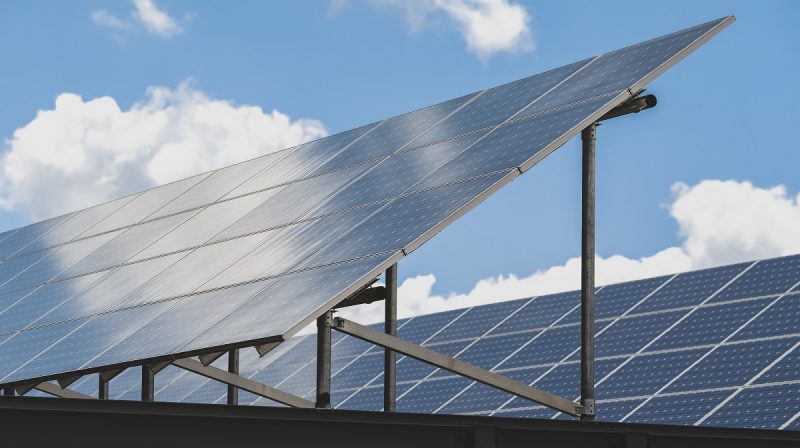A new solar energy power purchase agreement will help boost Virginia Tech’s Climate Action Commitment implementation efforts toward 100 percent renewable electricity by 2030.
The project involves 2.1 megawatts of solar arrays on seven Blacksburg campus buildings: Durham Hall, Hahn Practice Facility, McComas Hall, Sterrett Facilities Complex, Virginia-Maryland College of Veterinary Medicine, Virginia Tech Electric Service, and Dietrick Hall.
When complete, the arrays will produce 2800 megawatts of electricity per year and reduce campus carbon dioxide emissions by 44,000 tons over 20 years.
The new solar installations will accompany the existing and much smaller solar arrays located on the roofs of the Perry Street Garage, Whittemore Hall, and Durham Hall.
Installation of the new arrays will start this spring. Full installation is anticipated to be completed in about a year.
Virginia Tech is partnering with Sun Tribe to execute the purchase power agreement after a competitive bidding process. Sun Tribe is based in Charlottesville and was co-founded by three Virginia Tech alumni: Devin Welch, who earned a bachelor’s degree in business; Taylor Brown, who earned a bachelor’s degree in mechanical engineering; and Rich Allevi, who earned a bachelor’s degree in mechanical engineering and a master’s degree in biological systems engineering.
Sun Tribe will develop and initially own and maintain the arrays and sell the power to the Virginia Tech Electric Service through a power purchase agreement for six years. After that, Virginia Tech plans to purchase and maintain the systems for the remainder of their 30-year useful lives.
“Expanding Virginia Tech’s renewable energy portfolio is a key component in our efforts toward achieving the Virginia Tech 2020 Climate Action Commitment, which calls for 100 percent renewable electricity on the Blacksburg campus by 2030,” said Chris Kiwus, interim senior vice president and chief business officer. This is a strong step toward that goal,”
Along with delivering onsite renewable energy, the new solar arrays will help bolster climate action education and engagement opportunities over the long term. Students and researchers will be able to access the solar arrays and monitor real-time generation data to analyze trends in energy usage on campus. This will help inform operations and sustainability outreach campaigns and equip the next generation of climate action leaders with practical training.





